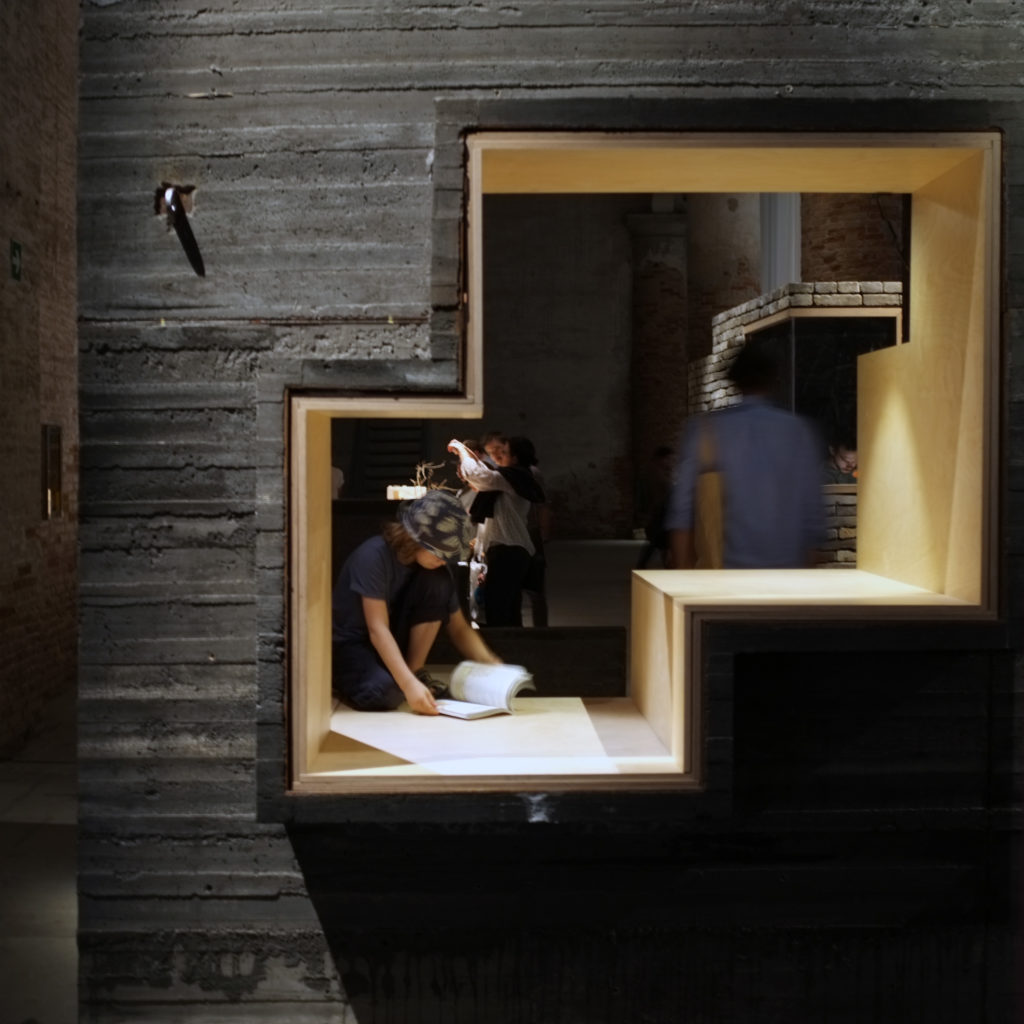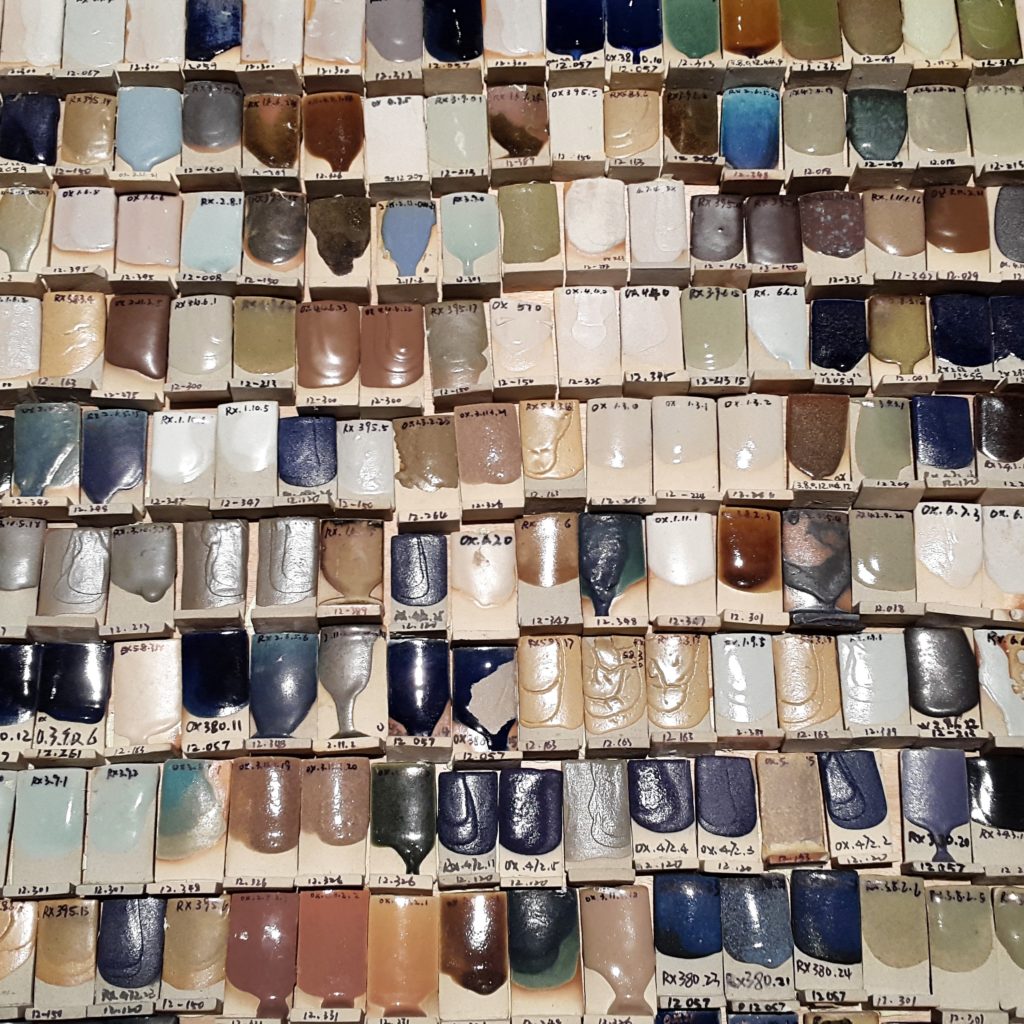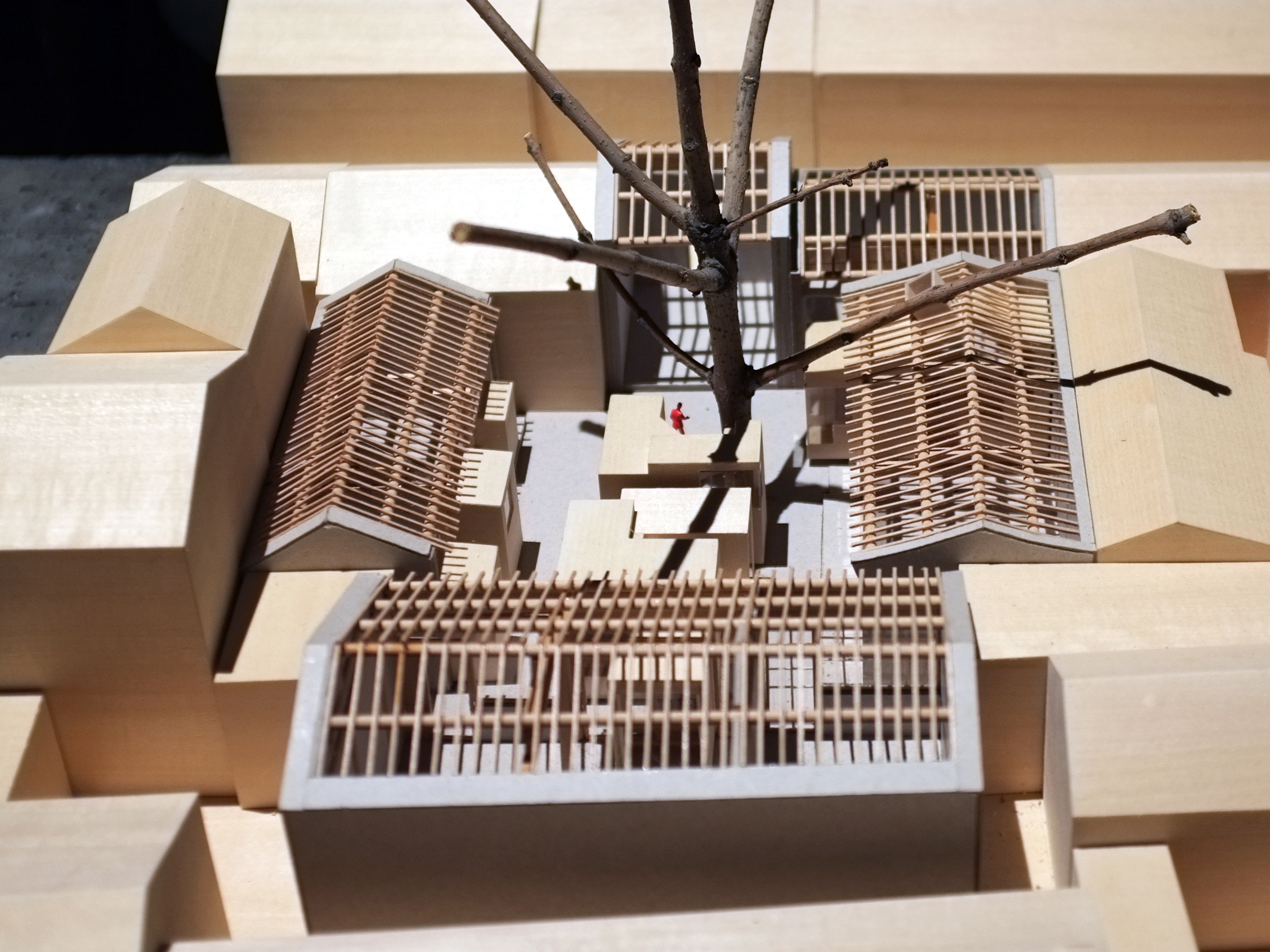REPORTING FROM THE FRONT, was this year’s title for the Biennale of Architecture in Venice. The international exhibition opened on the 28. of May and was curated by architect and pritzker prizewinner Alejandro Aravena.
Architects Sigrún Sumarliðadóttir, Mark Smyth and Giambattista Zaccariotto, visited the exhibition and gave us an insight into some of this years highlights.
Traditional technologies where a recurring theme at this year’s Biennale; presented both as a source of knowledge and a mechanism for education – the creation of knowledge. This is nothing new, and one could argue that our existing architectural toolkit was discussed exhaustively at the previous biennale curated by Rem Koolhas. The difference we observed (and welcomed) this year was a conscious effort by a large number of the participants to illustrate how these tools where deployed successfully in their contemporary practice.
One of our favourite contributions this year, came from Zhang Ke (Standard Architecture) of China. The presentation was particularly successful in explaining a solution to an urban problem, from the scale of the city through to a full-size prototype. He introduces us to the traditional Chinese Hutong typology, as a viable model for existing and future neighbourhoods. This high density, low-rise housing has been pushed to the side over the last 60 years with whole districts razed to the ground to make way for internationalist mid and high-rise developments. Predictably, this has been driven by profiteering and municipal ambition, at the expense of local well-being and traditions.

Model from Zhang Ke and Standard Architecture´s intervention at the Biennale di Architettura 2016. Photo by StudioBua.
The core of the Hutong model is the central, shared courtyard. Housing is densely packed around these rather flexible outdoor spaces, which provide ventilation, light and the opportunity for social interaction. Keen to avoid kitsch representations, or inauthentic restorations, Ke has looked to traditional techniques but framed them in a modern interpretation of the Hutong. The strength of the Hutong (and many other traditional housing types) is its adaptability. As shown in the work of Standard Architecture, it can be adapted to suit compact social housing as well as small groups of private houses.

Full scale models from Zhang Ke and Standard Architecture´s intervention at the Biennale di Architettura 2016. Photo by StudioBua
At the entrance to the Arsenale (the former Arsenal of the Venetian naval fleet) we were greeted by an intriguing collection of 1:1 study models. These experiments in materiality and construction immediately invited further scrutiny. The work by Amateur Architecture, is an exploration into traditional Chinese building methods and their application in modern construction. It could be argued that such techniques belong to the small-scale intervention, but the focus of their on-going research is to experiment with their use in larger scale, modern projects. Borrowing from the local language, materiality and technique creates a strong sense of the local and particular. This layer of meaning belongs to the local people, valorises their cultural identity and underlines the studio’s interest in the importance of collective memory, familiarity and cultural continuity.

Study models from Amateur Architecture´s intervention at the Biennale di Architettura 2016. Photo by StudioBua.

Study models from Amateur Architecture´s intervention at the Biennale di Architettura 2016. Photo by StudioBua.
Perhaps unfairly, we are a little surprised to be discussing cultural sustainability in relation to exclusively Chinese projects. There are many other examples from Latin America, India and across Europe, but perhaps these two examples are most pertinent given the velocity of the cultural and technological shift transforming their landscape. Avoiding the urban planning pitfalls of our recent (Western) past is a global issue, and the two examples described above are case studies that we can learn from as we seek a viable and sustainable alternative to the banal ‘one size fits all’ solutions dictated by the market. They show that, in China at least, it is not too late to halt the loss of local knowledge and trades. Used intelligently and integrated with essential modern systems, traditional typologies and techniques can be harnessed to create inventive solutions and a truly sustainable form of development. As practitioners, perhaps our greatest challenge will be to prove the economic and social advantages of this form of development to our clients. But as curator Aravena declares in his introduction to Reporting From the Front; “we shouldn’t blame the harshness of constraints for our incapacity to do our jobs…”.
Sustainably sourced local materials and traditional methods and typologies are not mutually exclusive from financial viability. They can create durable and easily adapted environments that resonate with local identity. The intangible cultural benefits of this form of development may be hard to sell to developers, but it seems that there is a credible economic model to be explored.
About the authors; Sigrún Sumarliðadóttir is an architect working for LMR Arkitektur in Oslo. Mark Smyth is an architect working for Manser Practice Architects and Designers in London. Giambattista Zaccariotto is a PhD architect-urbanist working for Asplan Viak in Oslo as well as being a associate professor in the Oslo School of Architecture and Design AHO. Together they form the architecture and urbanism collective StudioBua.
